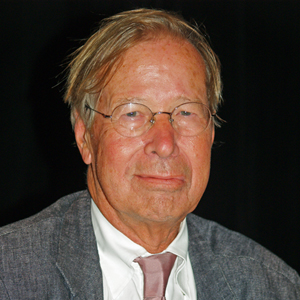In January 2001, 15-year-old Benjamin Hermansen from Holmlia in Oslo was murdered by racists and neo-Nazis. He died because of the colour of his skin. We remember him because he has become a symbol for one of the fundamental causes uniting humanists in Norway in this fledgling millennium the fight to put an end to racism. And we remember him because he was confirmed here in the civil confirmation ceremony in Oslo City Hall just a year ago, sitting dressed in his finest. His death was a terrible tragedy, but amidst all the pain, this sad episode has shown us something wonderful about young people, young people of many different colours in Norway. We saw that young people with different beliefs, different dietary customs, different modes of dress and different family traditions, can hold one another and weep. We saw that they can mobilize thousands of people in a torchlight march against violence. I am a resident of Holmlia, and this experience will stay with me for the rest of my life. We know that each minute, somewhere in the world, people's lives are being taken from them simply because they are different from others. We know that it can happen again, here in our own country.
Accepting our differences is only the first step, however. It is the means to an end, but not the end itself. Back in the 1970s, in an article I wrote for the Dagbladet daily newspaper about the denunciation of homosexual love, I used the cliché "those who feel differently" to describe homosexuals. Later, I received a letter from a lesbian woman. "I don't feel differently," she wrote, "my feelings are just the same as yours. I am myself, not something different."
It must be our goal to create a culture that truly acknowledges each individual's right to be himself or herself. One day, the notions "different" and "from a foreign culture" will not be used to describe other people. At the turn of the next century, an aspiring confirmand, leafing through her parents' antique book collection, will ask her mother: "What does 'from a foreign culture' mean?" And her mother will reply, "I don't know, dear. I've never heard it used before."
Civil confirmation was introduced to provide a choice for young people who sought to preserve the best of a long-standing tradition, but who did not feel it was right to take part in a religious rite. Tradition is also important to humanists. Traditions bind us together with the people we love as well as to those for whom we have no love. The latter is, in fact, one of the most important functions of traditions.
But traditions also pose a challenge to the individual's right to be him or herself.
Sometimes, our need for personal freedom comes into conflict with the beliefs and customs passed down through our families for generations. In the future, the civil confirmation movement will need to focus its efforts on supporting young women and men who wish to mark their independence in relation to traditions that, up to now, have been less well known within our borders. We pay tribute to Kadra, who has helped to generate awareness regarding the mutilation of young women's bodies.
However, we must take care not to jump to arrogant conclusions regarding the superiority of the morals of Norwegian society. Only a few decades ago during my own childhood an unwed mother was branded an outcast in this country. There are probably far more women from my generation who have been harmed by illegal abortions and the remedies of 'wise women' than there are circumcised immigrant women in Norway.
Let us strive for an open society, where we with energy and enthusiasm can both swear and pray, where we can march to the beat of our individual drummers, and where we can celebrate all of our differences, large and small alike. The world ahead of us is diverse indeed. A diverse Norway. I envy you you have your futures before you as you now embark on your journey into this new universe.
A few weeks ago I visited the Epcot Center at Disney World in Florida in the USA, which showcases the fabulous technology of the future. Norway has its own pavilion in the complex, and it is a very popular place to visit. There was a long line of Norwegian-Americans and others who were waiting for a glimpse of what Norway has to offer. Several young Norwegians, blond and blue-eyed and clad in colourful folk costumes (bunads), were helping to direct the line. When I reached the entrance, I did a double-take when I saw the young woman at the counter; the face above the bunad had dark eyes, olive skin and raven-black hair. Clearly, her genes came from Eastern Asia. But she was Norwegian. It was an important message, without words or drama an image of the future carrying far greater impact than Disney's technological fantasies. Maybe some of the guests from Minnesota or Wisconsin thought there was something not quite right about that image. In that case, I invite them to visit me in Holmlia. We can take a few minutes together to contemplate the stone that marks the site where Benjamin fell.

